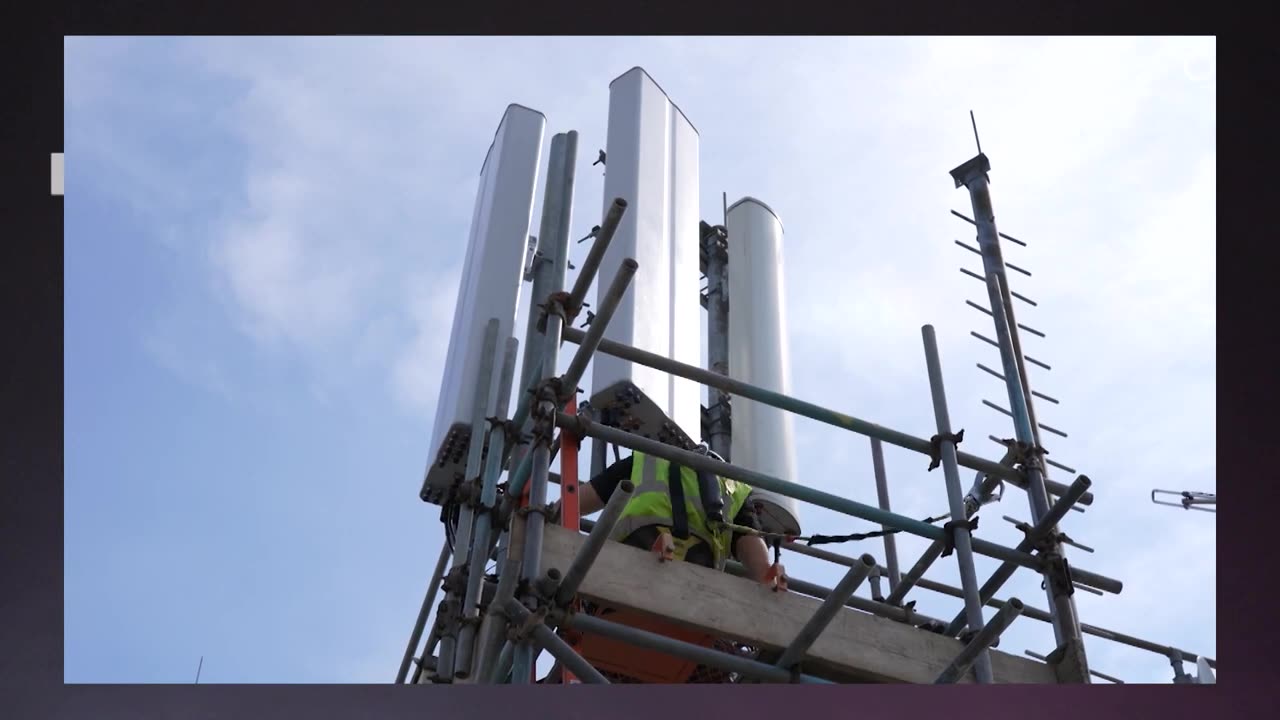Premium Only Content

Replacing Huawei's 5G Towers | Technically Speaking
Telecom engineers in hard hats and fluorescent jackets spent a decade scaling buildings to install Huawei Technologies Co. equipment across the U.K. Now, starting atop the Muswell Court tower block in Hull, they’re beginning a seven-year and $700 million task of ripping it all down because of a U.S.-led campaign against the Chinese company.
Hull is the first British city where Huawei will be eradicated from the country’s biggest network, BT Group Plc. The London-based company said it’s on track to cut out all of Huawei’s equipment there by July, substituting in components from Nokia Oyj.
“We were quite keen to pick one city area and do the whole of that, and make sure that we can really check that we’re not having an adverse impact on customer service,” BT Chief Technology Officer Howard Watson said in an interview with Bloomberg. “The signs are really good for that so far.”
Nation-wide, engineers will have to repeat this surgery on 12,000 of BT’s 18,000 mobile masts, rooftops, and other sites. About 130 have been completed so far because of the time-consuming process of seeking landlord permissions, closing roads, and ultimately mobilizing hundreds of people at any one time, Watson said.
It’s a costly exercise, too: BT’s set aside 500 million pounds ($701 million) to pay for replacement kit from Nokia and Ericsson AB. The U.K.’s Culture Secretary Oliver Dowden said the ban would delay Britain’s 5G roll out by as many as three years and cost the industry 2 billion pounds overall.
BT’s work in Hull offers an early glimpse at the reality of a rip-and-replace mandate set in motion by the U.S., which alleges Shenzhen-based Huawei is an unacceptable security threat because of its proximity to Beijing’s government. Huawei has repeatedly denied its equipment poses any risk.
Still, Britain ordered the Chinese telecom giant to be completely removed from 5G infrastructure by 2027. It’s not just Huawei’s recently installed 5G equipment that has to be removed, but its far more ubiquitous 4G base stations, too. That’s because the first generation of 5G is woven inextricably into 4G, and Huawei equipment is not interoperable with equivalents from its rivals.
But although decisions made in the halls of Washington and Westminster mean hundreds of telecom engineers now face the task of taking down antennas and gadgets they’d just finished installing, there's a silver lining: Amid financial turmoil in the wake of Brexit and coronavirus, it's won them years of extra paid work
-
 2:34:32
2:34:32
Badlands Media
5 days agoCODEX 9/11
253K205 -
 1:53:43
1:53:43
Nerdrotic
6 hours ago $0.27 earnedMysteries of 3I/ATLAS | Forbidden Frontier #113
35.1K4 -
 2:04:21
2:04:21
vivafrei
1 day agoEp. 278: D.C. Peace Wave! Big Tish & Nipple Judge SPANKED! "Maryland Man" Trafficker FREE & MORE?
79.1K106 -
 LIVE
LIVE
Damysus Gaming
2 hours agoBorderlands 3 - Part 8 - FL4K Time | Children of the Vault be Warned!
45 watching -
 1:30:28
1:30:28
Patriots With Grit
5 hours agoWhat You Should Know About Harmful Vaccine Ingredients And What To Say To Your Doctor, Pediatrician, Health Department or School When They Pressure You, Your Kids Or Your Family Members | Dr. Bryan Ardis, D.C.
6.98K5 -
 LIVE
LIVE
This is the Ray Gaming
2 hours ago $0.01 earnedSunday Night Live with the Boys | Rumble Premium Creator
38 watching -
 2:02:16
2:02:16
ItsMossy
2 hours ago🍃NEW MIC WHO THIS🍃DRIVING SIM GO BRRR🍃420 SESH🍃
2.06K1 -
 LIVE
LIVE
THOUGHTCAST With Jeff D.
2 hours agoSunday night Fortnite With ScottishVikingGaming & crew
27 watching -

a12cat34dog
3 hours agoSOLID DAWG RETURNS :: METAL GEAR SOLID :: 1998 IS UNFORGIVING {18+}
5.7K1 -
 4:02:55
4:02:55
yellow_1ron
4 hours agoGAMING WITH THE HOMIES JOIN UP | JOIN!
7.07K